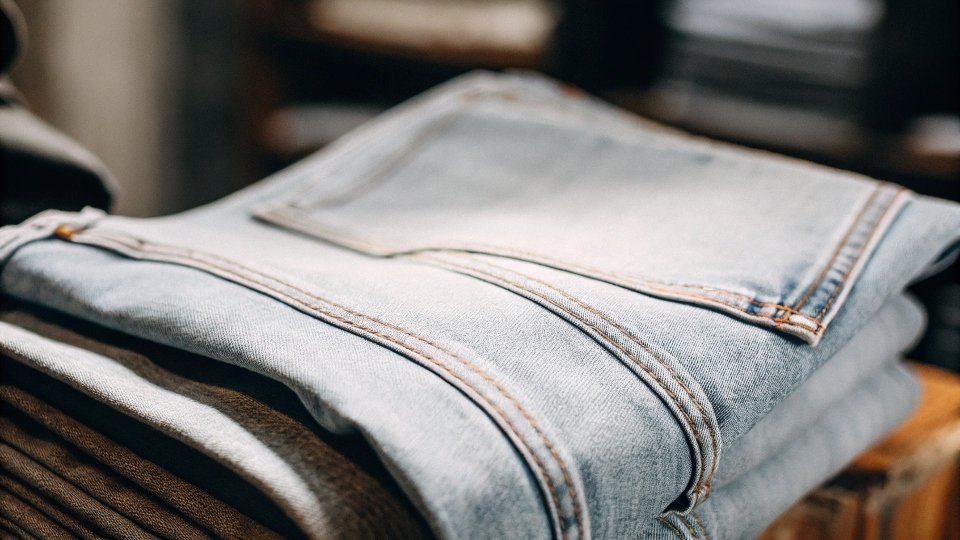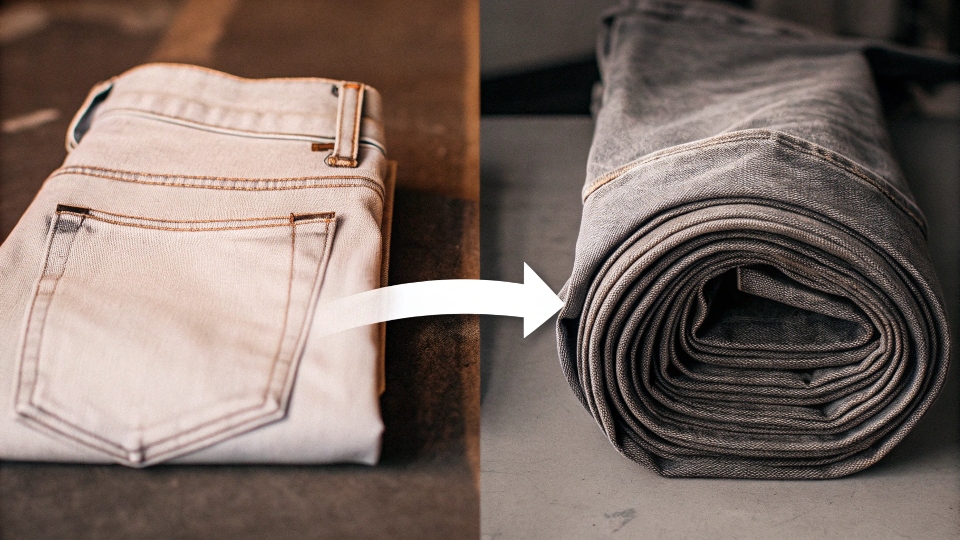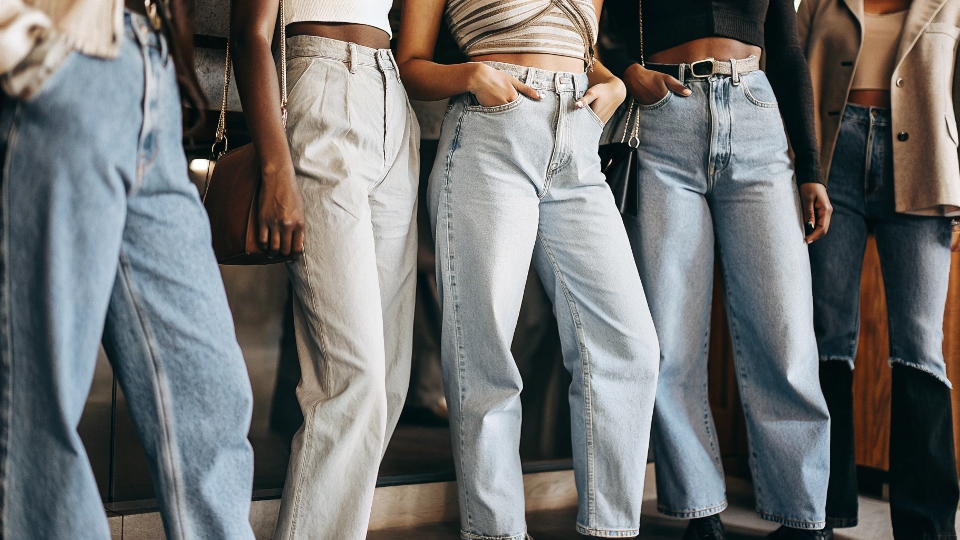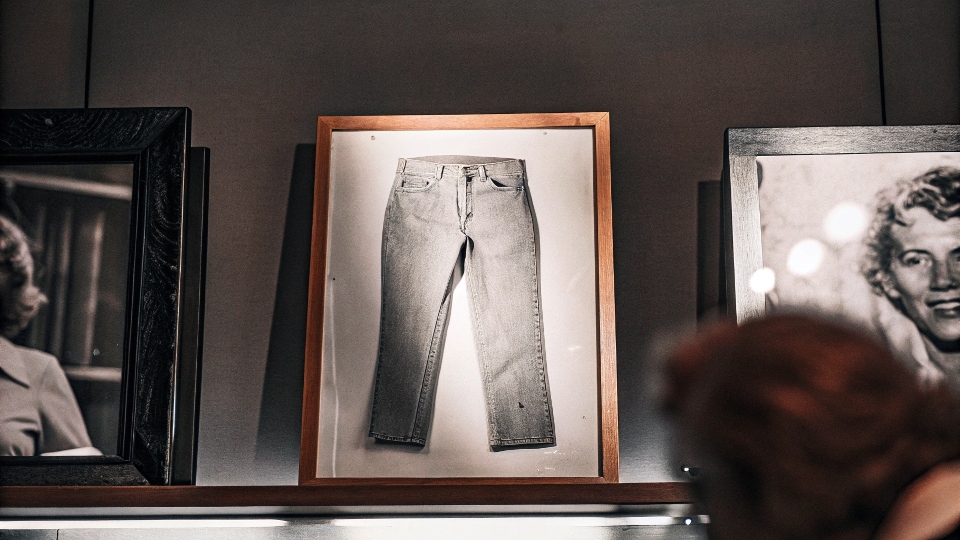You see the word 'denim' everywhere and wonder if it's just a marketing buzzword. It seems redundant. After all, aren't all jeans1 made of denim? You want your own brand to sound authentic.
Brands use 'denim2' to signal quality, heritage, and authenticity. It’s a powerful marketing word that separates real jeans from other pants. It promises the customer a durable, timeless product, not just a trendy piece of clothing.
In my 20 years of running a jeans factory, I've seen brands build entire identities around this one word. It’s not an accident.
They are tapping into a feeling and a history that goes much deeper than just the fabric itself. Let's break down why this simple word is so important and how it works to sell more jeans.
Why do people call jeans denim?
You hear people use the words 'jeans' and 'denim' as if they mean the same thing. This can be confusing, and you want to make sure you use the terms correctly as a professional.
Denim is the fabric, and jeans are the style of pants. People use them interchangeably because the two are so closely linked. Jeans are almost always made of denim, so the fabric's name has become shorthand for the pants themselves.
Think of it from my perspective in the factory. When a designer like you sends me a technical specification, it doesn't just say "make jeans." It says "use 12-ounce, 100% cotton denim." The distinction is critical in production.
Jeans are the final product, known for their specific construction: five pockets, rivets, and a certain type of stitching. But denim is the soul of the product.
It's a specific type of sturdy, cotton twill fabric. Brands use the word "denim" to emphasize that they are using this authentic, original material, not a cheaper substitute like a simple cotton twill or a polyester blend.
It’s a way of saying, "These aren't just blue pants; these are the real deal, built from the strong stuff." So while it's technically more accurate to say "denim jeans," the cultural connection is so strong that just saying "denim" is enough for everyone to picture a pair of jeans.
What do Gen Z3 wear instead of skinny jeans?
You've noticed that the era of the skinny jean is over. To stay relevant, you need to design for the next generation, Gen Z, but you're not sure what their preferred silhouette is.
Gen Z has largely replaced skinny jeans with looser, more comfortable fits. The most popular styles are baggy jeans4, straight-leg cuts, wide-leg jeans5, and relaxed-fit carpenter or cargo pants6. The silhouette has changed, but the core fabric is still denim.
This is one of the biggest shifts I've seen on my production floor in the last five years. The cutting patterns have completely changed. We went from using patterns that were narrow and tapered to patterns that are wide and straight.
But here is the key point for your question: the demand for denim has not gone down. It has just been applied to new shapes. This proves the timeless power of the fabric. Styles are temporary, but denim is permanent.
Here’s a quick look at what we are producing in large quantities for the Gen Z market:
| Style Name | Key Features |
|---|---|
| Baggy Jeans | Very loose through the hip and leg, often sits low on the waist. |
| Straight-Leg Jeans | A classic fit that is straight from the hip down to the ankle. |
| Wide-Leg Jeans | Fitted at the waist and then flares out dramatically. |
| Cargo/Carpenter Jeans | A relaxed fit with extra pockets and utility loops on the sides. |
Gen Z values comfort, individuality, and a bit of a vintage feel. These looser denim styles check all those boxes. So, while the skinny jean trend has faded, the "denim" category is stronger than ever.
What does denim mean in jeans?
You know that denim is a fabric, but you feel it carries a deeper meaning. You're trying to capture that essence in your designs but can't quite put your finger on what it represents.
In jeans, 'denim' means heritage, durability, and authenticity. It’s a cultural symbol of American workwear, youth rebellion, and effortless cool. It promises a product that is strong, reliable, and will only get better with age.
The word "denim" is loaded with history. It all started with its name, coming from the French town of Nîmes, where a similar fabric called serge de Nîmes was made. But its real identity was forged in America.
When Levi Strauss started making pants for gold miners in the 1870s, he chose denim because it was tough enough to withstand the hard work. It became the uniform of the American worker: the cowboy, the farmer, the factory hand.
Then, in the 1950s, movie stars like James Dean and Marlon Brando wore jeans, and suddenly denim became a symbol of rebellion. It was the cool, anti-establishment clothing choice.
This history is baked into the fabric. When a brand says they sell "premium denim," they are not just selling cotton. They are selling that entire story of toughness, independence, and cool. It’s a shortcut to making a new pair of pants feel like they have a soul.
Is denim an American thing?
Denim is so tied to the image of cowboys and American culture that it's easy to think of it as purely American. This might make you assume that the best production or innovation is only in the USA.
While denim became a cultural icon in America, its origins are French. Today, denim is a truly global fabric. Some of the most highly-praised denim in the world comes from Japan, Italy, and China, where my own factory contributes to its evolution.
The story of denim is a fantastic example of globalization. It started in Europe, was made famous in America, and was then perfected and reinvented all over the world. The "American" part is its cultural identity, but the manufacturing and artistry are now international. Different countries have become famous for different things.
Here’s a simple breakdown of the modern global denim landscape:
| Country | Known For |
|---|---|
| USA | The cultural heritage and classic brands like Levi's. |
| Japan | Premium selvedge denim7, artisanal production, and incredible indigo dyeing8. |
| Italy | High-fashion denim, innovative washes, and luxury finishes9. |
| China | Large-scale, high-tech production, and the ability to execute any style for global brands. |
At my factory in Dongguan, China, we work with American, European, and Asian brands. We might use Japanese selvedge fabric to create a design for a New York brand that is inspired by Italian washing techniques. Denim is no longer just an American thing; it is a global language that connects designers, manufacturers, and customers everywhere.
Conclusion
Brands use 'denim' because it sells more than just pants. It sells a story of authenticity, quality, and timeless style. It’s the powerful word that connects the fabric, the history, and the customer.
-
Understand the distinction between jeans and denim, enhancing your knowledge of fabric and style. ↩
-
Explore the cultural and historical importance of denim in fashion, revealing why it remains a timeless choice. ↩
-
Explore the latest denim trends favored by Gen Z, helping you stay relevant in the market. ↩
-
Learn about the characteristics of baggy jeans and why they are trending among younger consumers. ↩
-
Discover the reasons behind the resurgence of wide-leg jeans in contemporary fashion. ↩
-
Explore the practicality and style of cargo pants, a favorite among Gen Z consumers. ↩
-
Discover the unique qualities of selvedge denim and its appeal to fashion enthusiasts. ↩
-
Explore the art of indigo dyeing and its significance in creating high-quality denim. ↩
-
Understand the role of luxury finishes in denim and how they elevate fashion products. ↩










